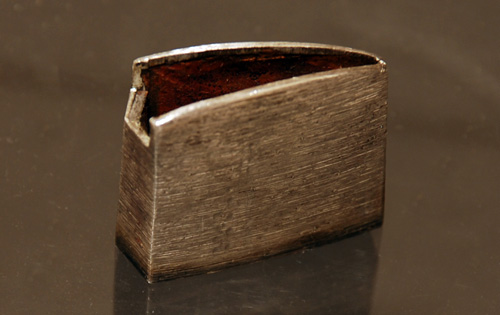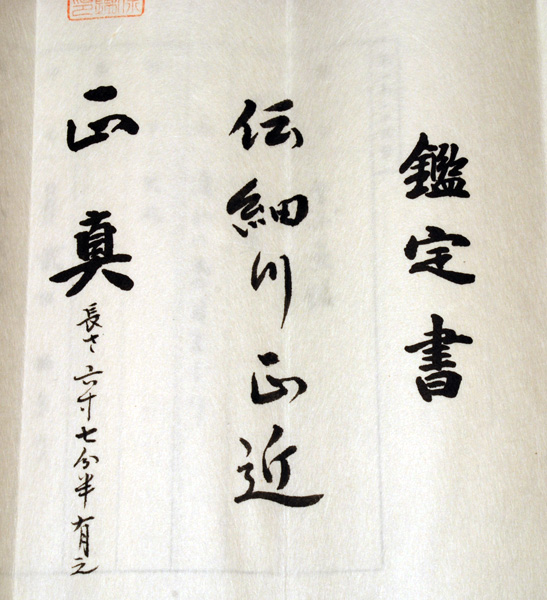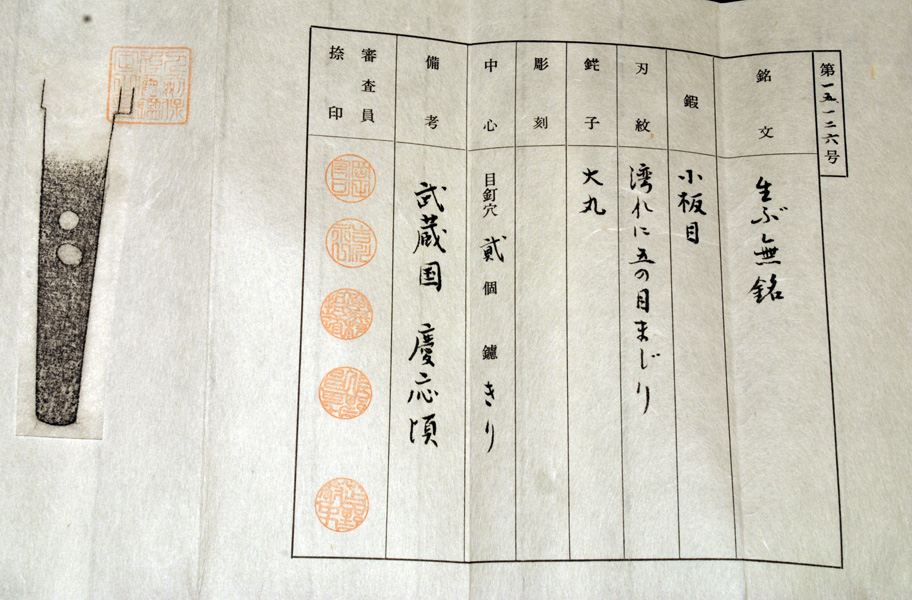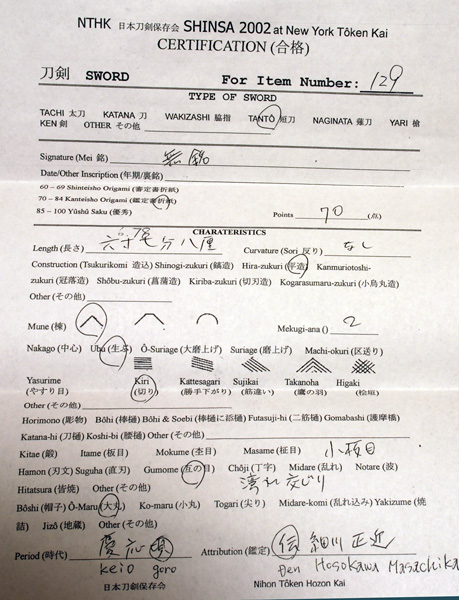|
| |||||||||||||||||||||||||||||||||||||||
Hamon : Ko-nie deki gunome midare. The nioiguchi is bright and tight. There are togari and hako midare formations mixed in. A great deal of sunagashi can be seen inside the hamon and especially along the nioi guchi. There are inazuma, kinsuji and uchinoke as well.
Boshi : O-maru with a hint of jizo on the ura. Sunagashi can be seen inside the boshi and dancing into the ji.
Kitae : Tight ko-itame approaching muji hada of Shinshinto times. Some nie formations lead off from the hamon into the ji and become chikei. The jigane is healthy and well forged.
About this sword : This is a nice tanto that comes complete with a Bakumatasu period koshirae. The blade has been attributed to Hosokawa Masachika by the NTHK. Masachika was a student of the famous smith, Hosokawa Masayoshi. Hosokawa Masachika is listed in the Tokotaikan on page 560. It states his ranking at two million yen and that he was active around Tenpo (1830 -1844) in Bushu. His family name was Sakai and sometimes he signed his mei as Sakai Masachika. Later in his career he used the kanji for Chika that we see used by the NTHK on this paper. Noting the nengo of Keio (1865-1868) stated on the paper, we can surmise that the attribution is to a later work of the Shodai. Interesting to note, there was a second generation who was active during the difficult times around the Meiji restoration. It is said that he was sentenced to be beheaded for making gimei blades.
The aikuchi koshirae for this tanto is quite nice. It features outstanding urushi lacqure work of a bonji , paulownia and kiri mon. It is becoming increasingly difficult to find original lacquer work of this quality and condition. The original reverse threaded silver mekugi is present as is the silver foil habaki. Lastly, a nicely made Edo period kozuka of a dragon clutching the sacred jewel is also included. This has a finely carved wave background and the takabori of the dragon is notably high with good detail. Overall this is a remarkably handsome package and wonderfully representative tanto from the end of the Edo period. As mentioned above it comes wtth a NTHK paper and the deluxe storage bag shown in the photos is also included.
Price : $2900



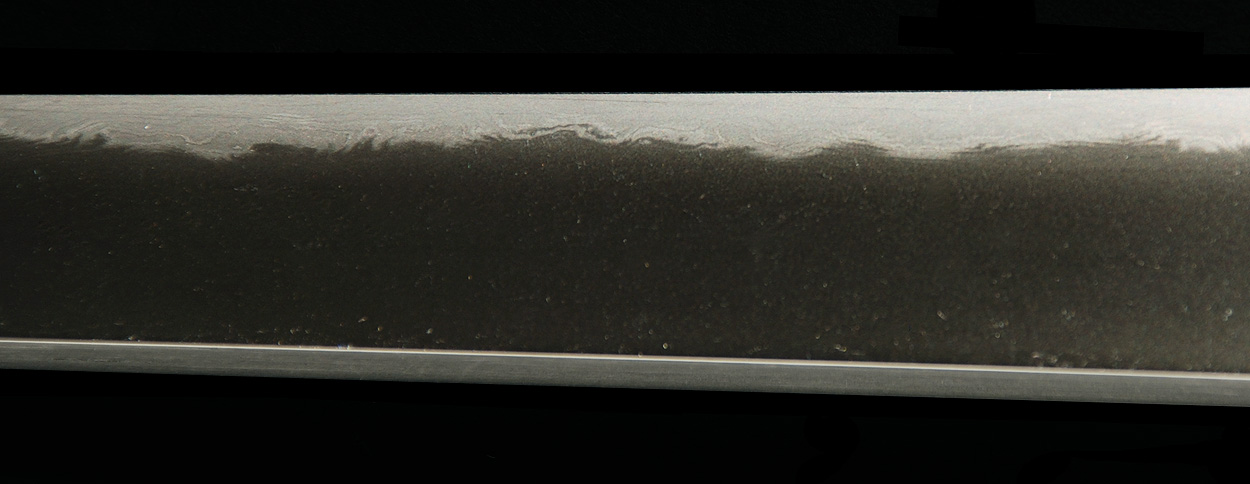



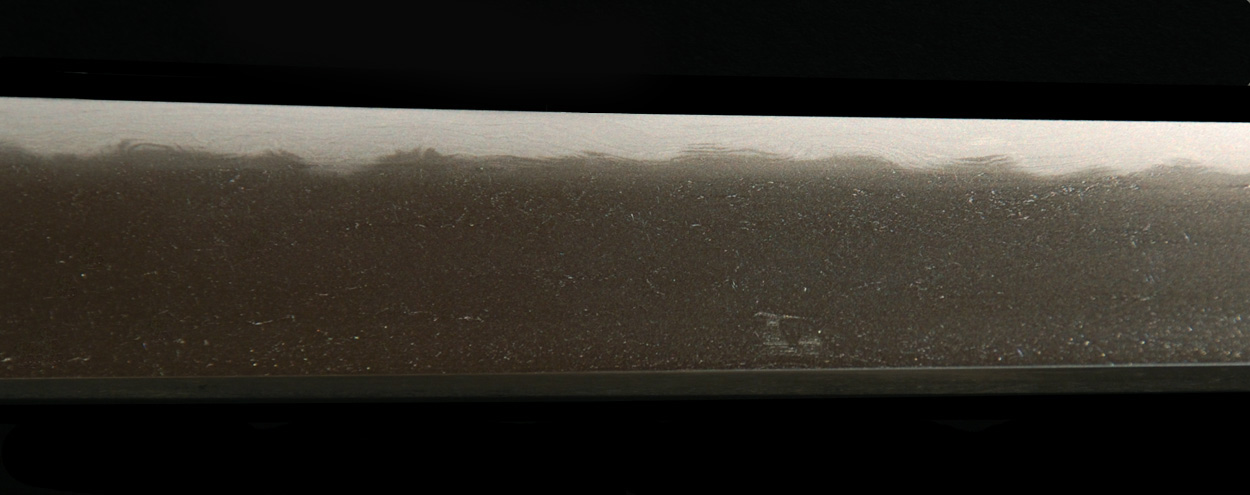





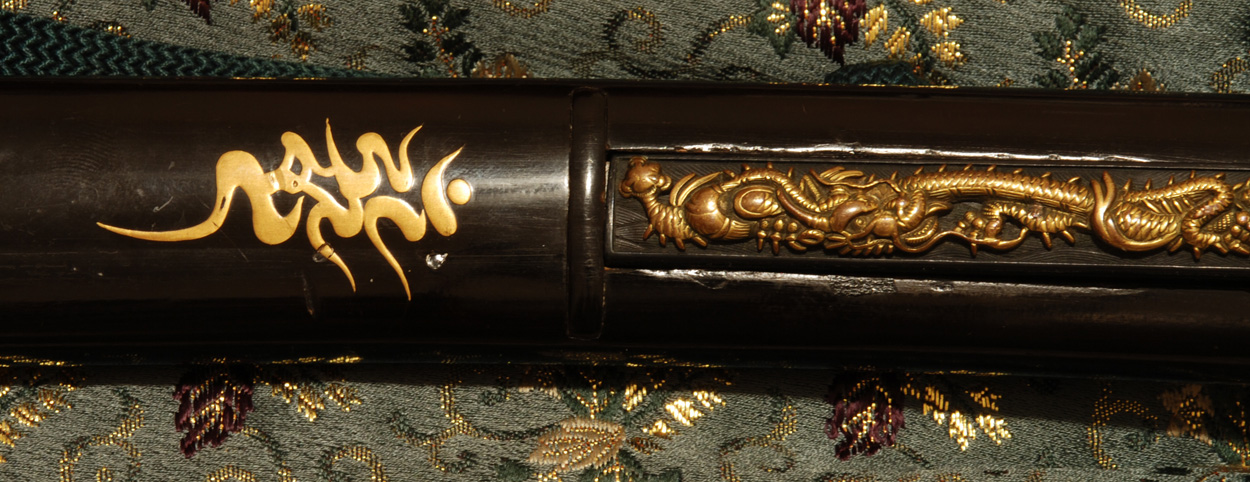

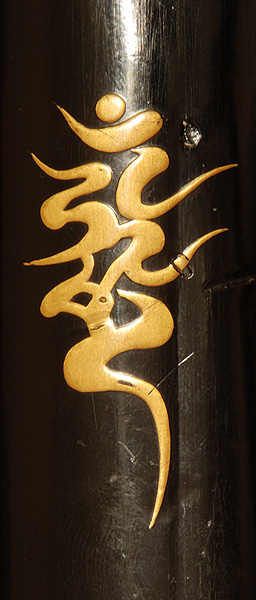 |

|



